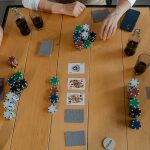
Watercolor painting is a beautiful and versatile art form that allows for endless creativity and expression. Whether you’re just starting out or looking to improve your skills, there are some essential things every beginner watercolor painter should know. This guide will explore ten key tips to help you bring your artistic vision to life.
Understanding Color Families
One of the fundamental aspects of watercolor painting is understanding the characteristics of different colors within the primary color families: red, yellow, and blue. Warm and cool tones can significantly impact your color mixing results, affecting the vibrancy or dullness of your hues. Take the time to experiment with various color combinations to discover the full range of possibilities.
Checking Paint Labels
Before diving into a painting project, it’s essential to familiarize yourself with the characteristics of your watercolor paints. Transparent, opaque, staining, and granulating paints each behave differently on paper, influencing your painting techniques and effects.
Transparent paints allow underlying layers to show through, creating vibrant and layered effects, ideal for glazing and building up colors. Opaque paints provide more coverage and can be used for highlighting or creating bold, solid shapes. Staining paints absorb into the paper quickly, making them difficult to lift once dry, while non-staining paints allow for easier manipulation and lifting. Granulating paints contain sedimentary particles that settle into paper textures, adding depth and texture to your paintings. To better understand how paints will interact on your canvas, pay attention to the labels on your paint tubes or pans.
Different Drying Stages
Watercolor paints transition through different drying stages as they are applied to paper. Understanding these stages is crucial for achieving desired effects, such as smooth gradients or crisp details.
Initially, paints are wet and easy to blend, making them suitable for creating smooth gradients. As they dry, they become tacky, allowing for finer details and controlled layering. Finally, when fully dry, paints retain their color and texture, providing a stable surface for additional layers or details.
Being aware of these stages helps in controlling the painting process and achieving desired effects without unwanted blending or texture issues. In addition, be mindful of the moisture levels of your paints and paper to avoid unintentional blending or texture issues.
Importance of Watercolor Paper
Investing in high-quality watercolor paper can make a significant difference in the outcome of your paintings. Cheap paper may result in streaky washes and uneven colors, whereas professional-grade paper offers better absorbency and durability.
To find the perfect fit for your style and preferences, experiment with different paper weights and textures. Rough paper textures may be ideal for creating expressive brushstrokes and adding texture to landscapes, while hot-pressed paper provides a smooth surface for intricate details and precise lines.
Working in Layers
Working in layers involves applying multiple transparent or semi-transparent washes of paint on top of each other to create depth and complexity in your watercolor paintings. This technique allows you to build up colors gradually, adjusting tones and intensities as you go. By strategically layering paints, you can achieve richer hues, subtle transitions, and intricate details, adding depth and dimension to your artwork.
Choosing the Right Brushes
Selecting the right brushes is essential for achieving desired effects and handling different painting tasks. Consider investing in a variety of brush materials, including both synthetic and natural bristles. Synthetic brushes are durable and excel in precision work, while natural bristle brushes offer superior water retention and are great for creating expressive strokes.
Having a range of brush sizes also allows you to tackle different painting tasks. Larger brushes are ideal for covering larger areas, while smaller brushes are perfect for intricate details.
Using Two Jars of Water
Maintaining clean colors is crucial in watercolor painting, and using two jars of water can help you achieve this. By dedicating one jar for rinsing your brushes and another for clean water, you can prevent color contamination and achieve more vibrant results. Make it a habit to regularly switch between the two jars during your painting sessions.
Opting for a Porcelain Mixing Palette
While plastic mixing palettes are commonly included in watercolor sets, opting for a porcelain mixing palette can enhance your painting experience. Porcelain palettes provide a smoother surface for mixing paints and prevent colors from spreading out uncontrollably. Invest in a porcelain palette to streamline your color-mixing process.
Prioritizing Quality Over Quantity
When purchasing watercolor supplies, quality should always have precedence over quantity. Investing in high-quality paints, brushes, and paper may require a higher initial investment, but it will ultimately yield better results and enhance your painting experience. Start with the basics and gradually expand your collection with quality supplies.
Embracing the Learning Process
Above all, remember that watercolor painting is a journey of continuous learning and growth. Don’t be afraid to make mistakes or experiment with new techniques. Embrace the challenges and celebrate your progress along the way. With patience, practice, and perseverance, you’ll develop your unique style and create beautiful works of art.
The Bottom Line
Mastering watercolor painting requires a combination of technical knowledge, artistic skill, and creative experimentation. By following these ten essential tips, beginner watercolor artists can unlock their full potential. So pick up your brushes, grab your paints, and let your creativity flow!
.



